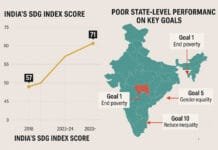Groundbreaking Research Aims to Unravel Glacial Melting Mystery
March 24, 2025: A team of renowned scientists from the University of Leeds and Aberystwyth University is preparing for a high-risk expedition to Mount Everest, where they will investigate why the ice in the Khumbu Glacier is warming at an alarming rate. This research could be critical in understanding the broader impact of climate change on glaciers that sustain millions of people in South Asia.
The Urgent Need to Study Glacial Melting
The research expedition, led by Professor Duncan Quincey from the University of Leeds, will focus on the Western Cwm, a high-altitude valley near Everest’s summit. Scientists suspect that intense solar radiation is melting the glacier’s surface, despite air temperatures remaining below freezing. This phenomenon could accelerate ice loss across the Himalayas, affecting the water supply of millions who rely on glacial meltwater.
For more details on glacier studies, visit the University of Leeds Climate Research page.
Investigating the Unexpected Heat Beneath the Ice
Scientists believe that as meltwater refreezes, it warms the surrounding snow and ice, increasing overall glacier temperatures. Previous research found that ice in the lower Khumbu Glacier was unexpectedly warm for its altitude, prompting further investigation.
Key Research Goals:
- Drill boreholes deep into the glacier to measure ice temperature.
- Monitor how solar radiation impacts the glacier’s melting process.
- Analyze real-time satellite data to track temperature variations.
- Identify whether this phenomenon is occurring in other glaciers worldwide.
For related research, explore NASA’s Climate Change Studies.
Challenges of High-Altitude Research
The research team will work over six kilometers above sea level, enduring thin air, extreme cold, and treacherous terrain. Their journey involves navigating the notorious Khumbu Icefall, considered one of the most dangerous sections of the Everest ascent.
Harsh Conditions Faced by the Team:
- Temperatures below -10°C at night.
- Low oxygen levels requiring constant monitoring for altitude sickness.
- Risk of equipment failure in extreme conditions.
- Limited rescue options due to the remote and dangerous location.
Innovative Technology and Sustainable Solutions
The team will employ solar, battery, and propane-powered drilling instead of combustion engines to minimize environmental impact. This approach aligns with global efforts to study climate change sustainably.
Cutting-Edge Methods in Use:
- Borehole drilling technology to record ice temperatures deeper than ever before.
- Satellite communication for real-time data transmission.
- Renewable energy sources to power research equipment.
- AI-based climate modeling to predict long-term glacial changes.
For an in-depth understanding of renewable energy solutions, check International Renewable Energy Agency (IRENA).
Implications for Water Security in South Asia
Himalayan glaciers are a vital water source for countries including Nepal, Bhutan, India, Pakistan, and Afghanistan. If glacier melting accelerates, agriculture, drinking water supplies, and hydroelectric power could be severely impacted.
Why This Study Matters:
- Glaciers provide freshwater to millions in Asia.
- Changes in glacier melt rates could disrupt irrigation, drinking water, and hydropower.
- Future climate models will incorporate these findings to improve predictions.
- Rising temperatures could trigger more frequent glacial lake outburst floods (GLOFs).
For regional water security updates, visit World Bank’s Water Resources.
Global Recognition of Glacial Conservation Efforts
The United Nations General Assembly has declared 2025 as the International Year of Glaciers’ Preservation, emphasizing the urgent need to address climate-induced glacier loss. Additionally, March 21 will now be observed annually as the World Day for Glaciers, an initiative led by UNESCO.
Learn more about UNESCO’s conservation efforts here.
Support from Everest’s Elite Climbers
Kenton Cool, a world-renowned mountaineer and University of Leeds alumnus, will be climbing Everest for the nineteenth time and supporting the research expedition. He hailed this project as one of the most significant scientific endeavors on Everest in the past two decades.
Kenton Cool’s Statement:
“This expedition is not just about scientific discovery—it is about protecting millions of lives. I’m honored to support this groundbreaking work that will shed light on one of the most pressing environmental challenges of our time.”
International Collaboration and Funding
This mission is funded by the Natural Environment Research Council (NERC) and involves researchers from the University of Leeds, Aberystwyth University, the University of Bergen (Norway), and Uppsala University (Sweden). Their combined expertise aims to deliver insights that will reshape climate science.
Conclusion: A Race Against Time
The Everest glacier research expedition is more than just an academic study—it is a race against time to understand how global warming is reshaping the Himalayas. As researchers embark on this daring mission, their discoveries could play a pivotal role in shaping climate policies and protecting vital water resources for future generations.
















